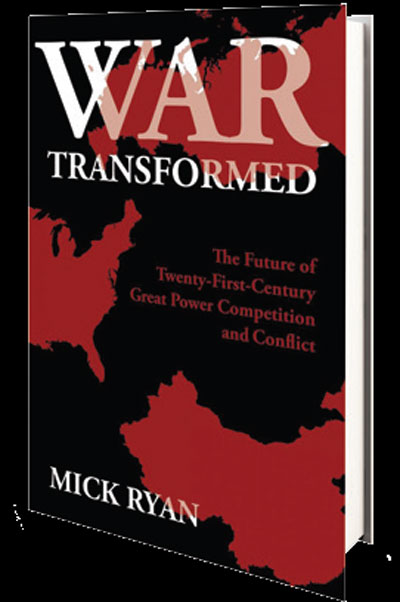Books | When Future Coalesces With Present
Military institutions must make a series of bets on the likelihood of possible future scenarios and their potential impacts. An extract
Mick Ryan
 The services of the U.S Defense Department have adopted varying approaches to the development of this more lethal and effective multidomain force. The Army in December 2018 issued its capstone plan for multidomain operations, “The U.S. Army in Multidomain Operations 2028.” It describes convergence of capabilities in the physical, cyber, and influence domains at multiple levels so that they might “prevail in competition” but also be able to “penetrate and disintegrate enemy anti-access systems and exploit freedom of maneuver. In 2016 the Air Force chief of staff listed multidomain operations as one of his three focal areas. Later, he noted that “multi-domain operations is about thinking through how we penetrate, where we need to penetrate; how we protect what we need to protect inside a contested space; how we persist in that environment for the period of time.
The services of the U.S Defense Department have adopted varying approaches to the development of this more lethal and effective multidomain force. The Army in December 2018 issued its capstone plan for multidomain operations, “The U.S. Army in Multidomain Operations 2028.” It describes convergence of capabilities in the physical, cyber, and influence domains at multiple levels so that they might “prevail in competition” but also be able to “penetrate and disintegrate enemy anti-access systems and exploit freedom of maneuver. In 2016 the Air Force chief of staff listed multidomain operations as one of his three focal areas. Later, he noted that “multi-domain operations is about thinking through how we penetrate, where we need to penetrate; how we protect what we need to protect inside a contested space; how we persist in that environment for the period of time.
The multidomain concept has begun to influence conceptual development and the procurement of weapons systems, and it is also shaping organizational reform. The U.S. Air Force has created a new Space Force that oversees U.S. access to space-based capabilities. The U.S. military has continued to explore different elements of the multidomain theory. One example of this is the work by the Defense Advanced Research Projects Agency to develop mosaic warfare, described as “a new asymmetric advantage—one that imposes complexity on adversaries by harnessing the power of dynamic, coordinated, and highly autonomous composable systems.
The foundational idea of mosaic warfare is to overcome Chinese and Russian advantages in precision, long-range attack systems (including kinetic, cyber, and influence activities). It also seeks to generate a sustained, long-term advantage for U.S. forces. One study of this concept by the Center for Strategic and Budgetary Assessments describes it as “leveraging distributed formations, dynamic composition and re-composition, reductions in electronic emissions, and counter-C2ISR [command
Subscribe To Force
Fuel Fearless Journalism with Your Yearly Subscription
SUBSCRIBE NOW
We don’t tell you how to do your job…
But we put the environment in which you do your job in perspective, so that when you step out you do so with the complete picture.







